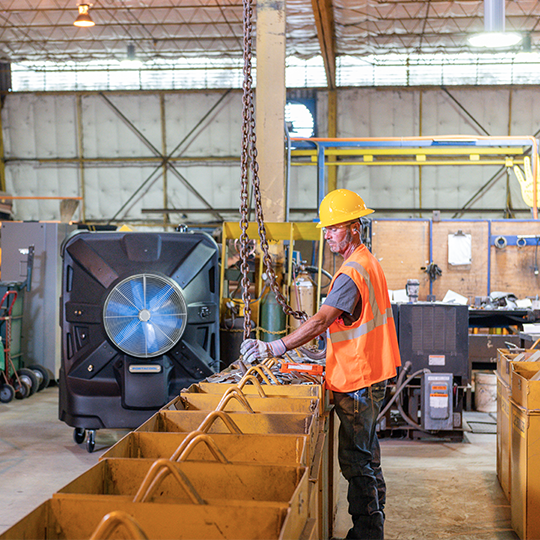QUESTION: What can I do to mitigate the risk of heat stress in a hard-to-cool environment?
Responding is Terry DeRise, manufacturing director, Portacool LLC, Center, TX
ANSWER: Every year, thousands of workers are exposed to excessive heat as a result of environmental conditions, workload, machinery output and personal protective equipment. This  heat exposure can lead to lack of focus, heat illness and even death. Agencies such as OSHA implement guidelines and regulations to ensure heat-related prevention practices are in place to protect workers. Ultimately, however, heat-related illness prevention is most effective when management commits to identifying and reducing exposure to heat hazards.
heat exposure can lead to lack of focus, heat illness and even death. Agencies such as OSHA implement guidelines and regulations to ensure heat-related prevention practices are in place to protect workers. Ultimately, however, heat-related illness prevention is most effective when management commits to identifying and reducing exposure to heat hazards.
It’s important to have proactive measures in place to mitigate heat. Here are some basics:
Rest. Water. Shade. Workers must be provided water, scheduled breaks for rest, and a shaded area to cool down and recover if they are exposed to outdoor conditions.
Training and safety plans. All organizations should have an injury and illness prevention program to help identify hazards in the workplace and protect all employees. These plans are not one size fits all and should be tailored to your company’s specific work environment and crew size. Gathering information on current safety rules, policies and practices will help develop a good foundation on which to build a written plan. Go above and beyond to train supervisors on safety planning related to heat safety.
Knowledge. Make sure workers take the risk seriously by explaining how the body responds to heat and hot conditions. As temperatures rise, the body releases heat more slowly. As humidity increases, sweat evaporation decreases, while stagnant air makes sweat evaporation more difficult. A 2° F increase in body temperature can affect mental functioning, and an increase of 5° F can result in serious illness or death. During hot weather, heat illness may be an underlying cause of heart attacks, falls, equipment-related incidents and other injuries.
Proactive engineering controls. In environments that are difficult to cool, additional measures may need to be taken. Consider placing a portable evaporative cooler in trouble areas, such as near heat-generating machinery. These devices create cooler air by using ambient air and water, as opposed to a fan that just blows warm, stagnant air. Coolers typically work off a standard 110-volt plug and come in a range of sizes to achieve cooling where it’s needed.
Plan for acclimatization. Acclimating workers is an important and necessary process. An effective heat acclimatization program gradually increases worker exposure to heat over a seven- to 14-day period. By building up tolerance to the heat, this process can help ensure safety and increase productivity by reducing mistakes made as a result of heat fatigue. In addition, consider adapting worker activity to account for high heat conditions. This could mean scheduling work earlier or later in the day, or implementing work/rest schedules.
Often, heat stress is a hazard that can be prevented by being proactive; ensuring workers and supervisors know the signs of heat stress, the proper procedures and about the resources that are available to them; and implementing tools such as adjusted schedules or portable evaporative coolers in hard-to-cool environments.